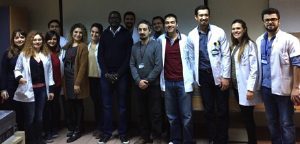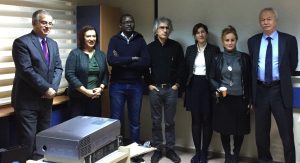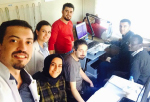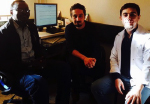By W. (Bill) M. Carroll, MB, BS, MD, FRACP, FRCP(E)
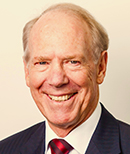
W. (Bill) M. Carroll, MB, BS, MD, FRACP, FRCP(E)
Recently, there has been an explosion of health awareness recognized by individuals, nations, and the global community. The decade of the brain was followed by the human genome project, accompanied by the near eradication of malaria and polio. Yet, we now stand at the threshold of even more rapid advances on many fronts.
3-D printing of the human heart is being used in planning cardiac surgery. Next-genome sequencing is revolutionizing old concepts of disease. Gene therapy shows success in some inherited neuropathies (spinal muscular atrophy) and myopathies (Duchenne muscular dystrophy). Precision medicine is no longer an aspiration in some diseases and countries, and the ability to use publicly accessible data via expanding cloud technologies is yielding unexpected information and the repurposing of medications. Conversely, the cost of drug development, especially in bringing them to market, is becoming prohibitive, exacerbating the accessibility of therapies in many countries.
For the thoughtful and the less fortunate, it is obvious that the developing progress, while exciting and to be celebrated, is creating problems that need to be addressed. The increasing burden of non-communicable diseases (NCD) adds up to what can only be viewed as a potential tsunami for the economies of the world. These NCDs include mental (neurological) and substance-abuse disorders; musculoskeletal disorders; neurodegenerative conditions such as dementia, stroke and Parkinson’s disease; poor lifestyle choices in diet and exercise; and the effects of unhealthy environments1 together with the changing demographic of aging populations in so-called developed countries.
Those people and countries least able to afford the advances and/or mobilize services to adjust to them will see a widening gap, not only in these areas of disease but also in their ability to respond to the periodic recrudescence of infectious disease. This was seen with the outbreaks of Ebola, MERS, SARS, and, most recently, the Zika emergency. It is not by chance that the recent waves of mass migration have occurred as much because people seek better lifestyles (and health services) as fleeing armed conflict.
It is in this environment that those in the neurological fraternity need to mobilize and prepare measures at a number of levels that will mitigate the consequences of these changes. To begin, we must look at the magnitude of the problems facing us. Then, we will evaluate the resources we have available. Finally, we will view three illustrations of how those resources can be optimized to provide the organizational readiness for rapid and effective action as well as long-term planning on a national, regional, and global scale.
The Problem
The global burden of neurological disease figures as a relatively small fraction of the global burden of all disease (GBD) for a range of reasons2. Although not included in the WHO 2014 global status report on NCDs3, stroke and dementia are of major concern to clinicians and national health systems.
The annual stroke toll is approximately 15 million, with one-third being fatal and another third permanently disabling. Indeed, stroke mortality is double that of HIV/AIDS, malaria, and tuberculosis combined, emphasizing the rising burden of brain NCDs. With rates of dementia estimated to triple from 47.5 million to 115 million worldwide by 20504, it is clear that the world faces a rising impost on resources.
Currently, the total burden of mental, neurological, and substance abuse (MNS) is now reckoned to be 258 million disability-adjusted life years — a measure of overall disease burden expressed as the number of years lost due to ill health, disability, or early death. That is up from 182 million in 1990, which has been equated to a $8.5 trillion (U.S.) loss of economic value now, and which will increase again by a factor of two by 20305.
With the addition of other NCDs to stroke and dementia, it is clear that the world neurological fraternity must act in concert and alert governments. Those other NCDs include age-related Parkinson’s disease and other chronic neurodegenerative disease, perinatal injury largely due to asphyxia, childhood developmental and degenerative disease, schizophrenia, high levels of traumatic brain disease, all causes of epilepsy, substance and alcohol abuse, and rising neuroinflammatory disease of the brain and spinal cord.
While world neurological expertise has been steadily advancing partly in parallel with the recognition of the increasing challenges on the horizon and partly with the advances in medical science, it is far from equitably distributed. When the widening gap between well-developed countries with comprehensive health care and those less developed populations and health care systems is appreciated, the likelihood for an emergency is evident6.
Resources
There are a number of valuable resources available. These include measures of the GBD and specific problem areas, such as the NCDs, BNCDs, and MNSs, as well as WHO monitoring for more acute challenges to health through national health departments and WHO’s regional structural organization. (The WHO regional organization mirrors approximately that of the WFN). The periodic assessments of the GBD by the WHO and the Atlas of Neurology (a joint WHO-WFN project) provide the broad sweep, big picture view of resources and needs.
The WFN itself plays an important and growing role in the equalization of access to neurological care both through regional organization support and neurological education. The establishment of the African Academy of Neurology (AFAN) and its first meeting in Tunis this year are illustrative. It joins the expanding roles of other WFN regional organizations, including the Pan American Federation of Neurological Societies (PAFNS), the Australasian and Oceanian Association of Neurology (AOAN), the Pan Arab Union of Neurological Societies (PAUNS), the American Academy of Neurology (AAN), and the European Academy of Neurology (EAN).
Neurological training, the improvement in access to neurological care, and an increasing awareness of the importance of brain health in the general population are furthered by World Brain Day (WBD)7 and the biennial World Congress of Neurology (WCN). The WFN, in partnership with AFAN, has followed the World Federation of Neurosurgical Societies (WFNS) program to train young African specialists. The WFN plans to have four regional training centers in Africa — two each for the Francophone and Anglophone regions. Additional emphasis of WFN involvement at a global level was given by WFN President Raad Shakir as chair of the Neurosciences Topic Advisory Group for the WHO-sponsored International Classification of Disease (ICD-11), due for release in 2018.
More generally, other areas are developing, which will enhance the ability to respond to challenges. Increasingly rapid communication through electronic media, including social media, draws attention to emerging problems. The maturation and expanding expertise of neurological subspecialties and their involvement in wider educational activities (e.g. the International League Against Epilepsy, the World Stroke Organization, and the Movement Disorders Society) as well as the added interest of the larger regional neurological organizations, such as the AAN and EAN, provide a rich resource of intellectual and monetary capital.
Over the last few years, the WFN has provided a focal point for those involved in the medical care of neurological disease through two similar, though importantly different, groups. The first is the World Brain Alliance (WBA). Originally chaired by Vladimir Hachinski, MD, when he was WFN president, it is now chaired by Dr. Shakir. The WBA members include, in addition to the WFN, global organizations that usually do not include neurologists, such as the WFNS, the International Brain Research Organization (IBRO), the World Psychiatric Association (WPA), the International Child Neurology Association (ICNA), and the World Federation of Neurorehabilitation (WFNR). The second group is the Global Neurology Network (GNN) for which the WFN is the current convener and whose members mainly include neurological disease-specific organizations from around the world. Many were originally part of the WFN but have grown to be independent organizations. They include the World Stroke Organization (WSO), the International League Against Epilepsy (ILAE), the Multiple Sclerosis International Federation (MSIF), the Treatment and Research in Multiple Sclerosis (TRIMS) Group, Alzheimer’s Disease International, the Movement Disorder Society, the International Headache Society, the International Society for Clinical Neurophysiology, the Peripheral Nerve Society, and the Tropical Disease Group. Closely associated with this category of disease-specific organizations are both large regional organizations supporting all neurological subspecialties, such as the AAN and the EAN, and the smaller WFN-affiliated regional organizations, such as the AOAN, PAUNS, PAFNS, and AFAN.
Together, these two groups create an impressive global alliance of neurological expertise. It is an alliance appropriately suited to provide global disease-specific advice to international organizations, such as the WHO and the U.N., and to advocate with these organizations and national governments. It is an alliance worthy of the term Global Neurology Alliance.
Recent Examples of United Action
The most critical function of a global alliance of neurological organizations is the ability to formulate, organize, and execute rapid and effective policy or reaction. A powerful advocacy initiative that can mobilize governments and NGOs is of enormous value to those under threat, and it is the rapidity of communication and the common understanding of the advocating group that empower these initiatives as a force for good.
Underlying this ability are two fundamentals. The first is an intimate understanding by the subspecialty organization in the national, regional, and global spheres of all matters affecting practitioners and patients. The second is the intercommunication among the various subspecialty organizations facilitated by the GNN. Regular meetings, updates on activities, and a common understanding of the means to reach their constituencies contribute to the effectiveness of the network.
Recent examples of where this alliance has been called to mobilize and has proven its worth are the 2015 Zika virus outbreak, the WHO initiative on NCDs, and the crisis over the WHO classification of stroke as a circulatory rather than neurological disease.
The outbreak of the arthropod-borne (Aedes aegypti) Flavivirus crisis, known as Zika virus, in April 2015 in Brazil, was designated by the WHO in February 2016 as a public health emergency of international concern (PHEIC)8.
Zika was first found in Uganda in 1947, and the first outbreak of disease occurred in Micronesia in 2007. The South American outbreak was much worse. The primary infection was often asymptomatic or relatively banal, comprising arthromyalgia, a light rash, or a low-grade fever. The major secondary effects were of brain neuronal migration injuries to the fetuses of pregnant women manifesting often, but not solely, as microcephaly, and a postinfectious neuropathy resembling Guillain-Barré syndrome.
Given the unknowns with this outbreak and the urgency to gather information, a committee, headed by John England, MD, was constituted, assisting the global investigation of the outbreak. The committee was supported by WFN resources through the regional organization in South America, the expertise within the organization, and the rapidity with which the WFN could respond to assist. PHEIC status was ceased in November 2016.
The NCD initiative, launched in 2011 by the WHO following the GBD report highlighting the impact of NCDs9, concentrated on cardiovascular disease, cancer, diabetes, and respiratory disease. Omitted were major illnesses central to brain health, such as dementia and stroke. The omission was questioned by the global neurological fraternity. The WFN, through its role as WBA convener and led by Dr. Shakir, waged a campaign to have brain NCDs included in the initiative5.
How did such a situation arise? It seems that because the WHO viewed stroke and dementia not to be brain diseases but rather as circulatory and mental disorders, respectively, they were not included as risks to brain health. There are historical reasons for this view, which were defended by the WHO, but ICD-11 brought this matter to a head. In doing so, it also provides an illustration of the value of a global neurological alliance.
The ICD is revised every decade. ICD-10 was adopted in 1990, and in 2007 the revision ICD-11 was commenced under the supervision of the Revision Steering Group, which took advice from a number of Topic Advisory Groups (TAGs). The ICD-11 Neurology TAG was constituted in 2011 under the leadership of Dr. Shakir. Soon after this process commenced, stroke was apparently accepted as a disease of the brain. When the beta version of ICD-11 was published in 2016, the neurological and stroke fraternities were astounded to find that stroke had been changed to a circulatory disease.
Clarity as to the reason stroke had been omitted from the NCD initiative had arrived. Stroke was not a brain disease. The decision galvanized the neurological and stroke communities. After considerable effort, it was determined that the powerful statistics group within the WHO had been at the forefront of the opposition to the change initiated by the Neurology TAG. While the grounds for such opposition were reasonable and based on a desire to obtain the best longitudinal epidemiological data, it effectively “hid” the impact of stroke in the global community and paid little heed to the growing evidence of the contribution of cerebrovascular disease to dementia and NCDs in general.
There followed initial correspondence to Lancet10 by the WFN and WSO, and the formation of an ad hoc advisory group through the recruitment of national departments of health to voice opposition to the way stroke was handled by the WHO. A number of important face-to-face and telephone meetings took place, as well as a review of the evidence, from the WSO perspective, of why stroke should not be classified as only a circulatory disease. Through an innovation introduced in ICD-11, multiple parenting was possible. This, together with the weight of argument, has seen stroke, as of April 2017, classified as a cerebrovascular disease in the current beta version of ICD-11—an event described by many as momentous. (See the President’s Column.)
Conclusion
It is no accident that these external initiatives of the WFN and partners have been successful. The ability to respond rapidly, to gather expertise, and to plan and implement the agreed approach, while maintaining the flexibility to adapt to developments, are the prime reasons. That there has been an immediate sense of shared purpose, and the acknowledgement that together we are better able to present the arguments firmly and authoritatively, has no doubt assisted. The foresight of the originators of these two groups has to be praised, as does the leadership of the current WFN president and the members of the WBA and GNN.
With the world facing continuing uncertainties, it is likely we shall see more reasons to be grateful for the contributions made by these groupings and to possibly have periodic joint meetings. In practice, these groups and their membership represent a truly global neurological alliance. •
W. (Bill) M. Carroll, MB, BS, MD, FRACP, FRCP(E), is first vice president of the WFN and is the WFN convener for the Global Neurology Network.
References:
- Vos T et al Years lived with disability (YLDs) for 1160 sequelae of 289 diseases and injuries 1990–2010: a systematic analysis for the Global Burden of Disease Study 2010. Lancet. 2012;380:2163–96.
- Global, regional, and national incidence, prevalence, and years lived with disability for 301 acute and chronic diseases and injuries in 188 countries, 1990-2013: a systematic analysis for the Global Burden of Disease Study 2013. Lancet. 2015; 386: 743–800.
- Global Status Report on Noncommunicable Diseases 2014. WHO ISBN 978 92 4 156485 4.
- Prince M et al. The global prevalence of dementia: a systematic review and meta-analysis. Alzheimer’s and Dementia. 2013; 9: 65-75.
- Shakir R Brain health: widening the scope of NCDs. Lancet 2016,387: 518-519).
- Income inequality: The gap between rich and poor. OECD insights 2015.
- Wasay M et al. World Brain Day 2016 celebrating brain health in an ageing population. Lancet neurology 2016;15:1008.
- Zika virus and complications: 2016 Public Health Emergency of International Concern. WHO Int on line.
- Bloom D E et al. 2011 The global economic burden of non-communicable diseases. Geneva: World Economic Forum.
- Shakir R et al. Revising the ICD: stroke is a brain disease. Lancet 2016, 388: 2475-2476.
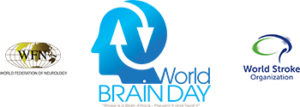 This year’s World Brain Day commemorates the foundation of the WFN. The prior World Brain Day topics were aimed at epilepsy and dementia, and now it is aimed at stroke. We are partnering this time with the World Stroke Organization (WSO), which puts great global effort into the prevention and treatment of stroke.
This year’s World Brain Day commemorates the foundation of the WFN. The prior World Brain Day topics were aimed at epilepsy and dementia, and now it is aimed at stroke. We are partnering this time with the World Stroke Organization (WSO), which puts great global effort into the prevention and treatment of stroke.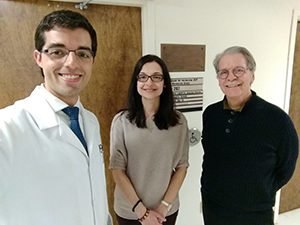
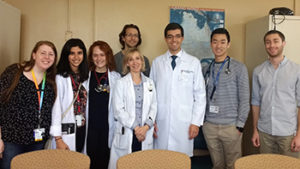
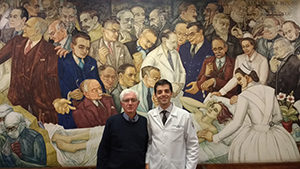
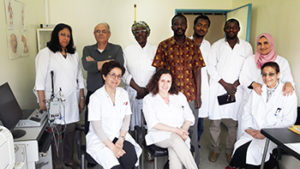
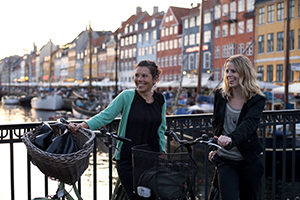
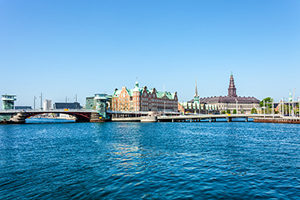
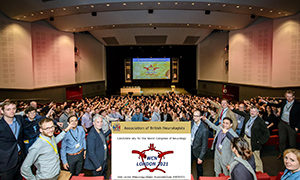
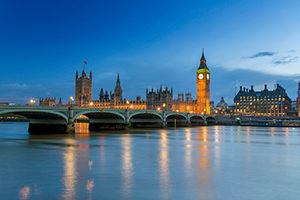
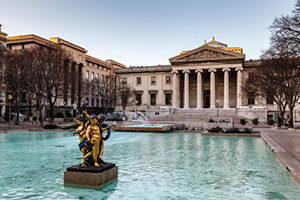
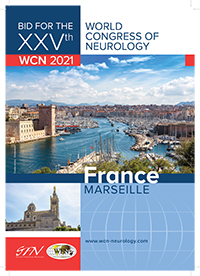 The French Society of Neurology has an old and rich history, but also is a vivid society with an annual congress assembling more than 3,000 neurologists each year. The French teams are major contributors in all the fields of clinical neurosciences and will work with the international committee to develop an amazing scientific program. It is also the decision of the society to open the congress to participants from all around the world, with an intensive program of support dedicated to young neurologists.
The French Society of Neurology has an old and rich history, but also is a vivid society with an annual congress assembling more than 3,000 neurologists each year. The French teams are major contributors in all the fields of clinical neurosciences and will work with the international committee to develop an amazing scientific program. It is also the decision of the society to open the congress to participants from all around the world, with an intensive program of support dedicated to young neurologists.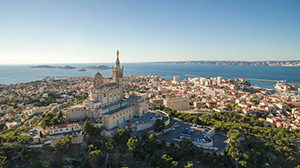


 World Brain Day 2017 will be centered on stroke, and will be jointly prepared and celebrated with the World Stroke Organization. This topic emphasizes the importance of stroke and should alert towards prevention and introduce advances in treatment.
World Brain Day 2017 will be centered on stroke, and will be jointly prepared and celebrated with the World Stroke Organization. This topic emphasizes the importance of stroke and should alert towards prevention and introduce advances in treatment.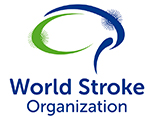 We hope that many national societies will be able to join us again this year. Material for the campaign, as well as suggestions for press releases, will follow.
We hope that many national societies will be able to join us again this year. Material for the campaign, as well as suggestions for press releases, will follow.